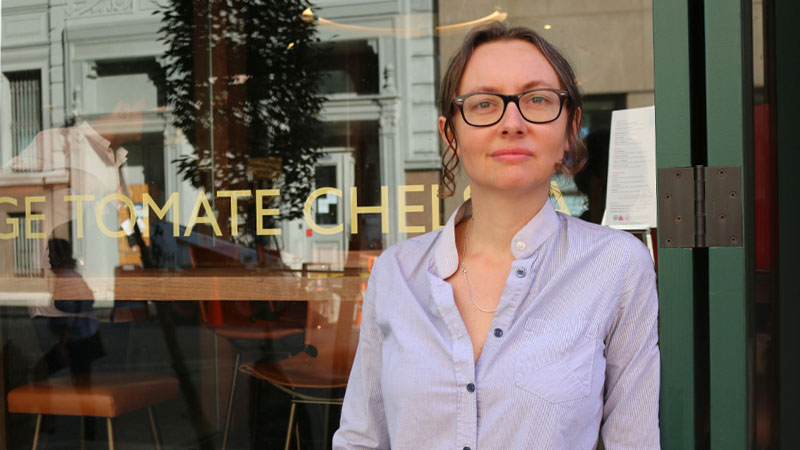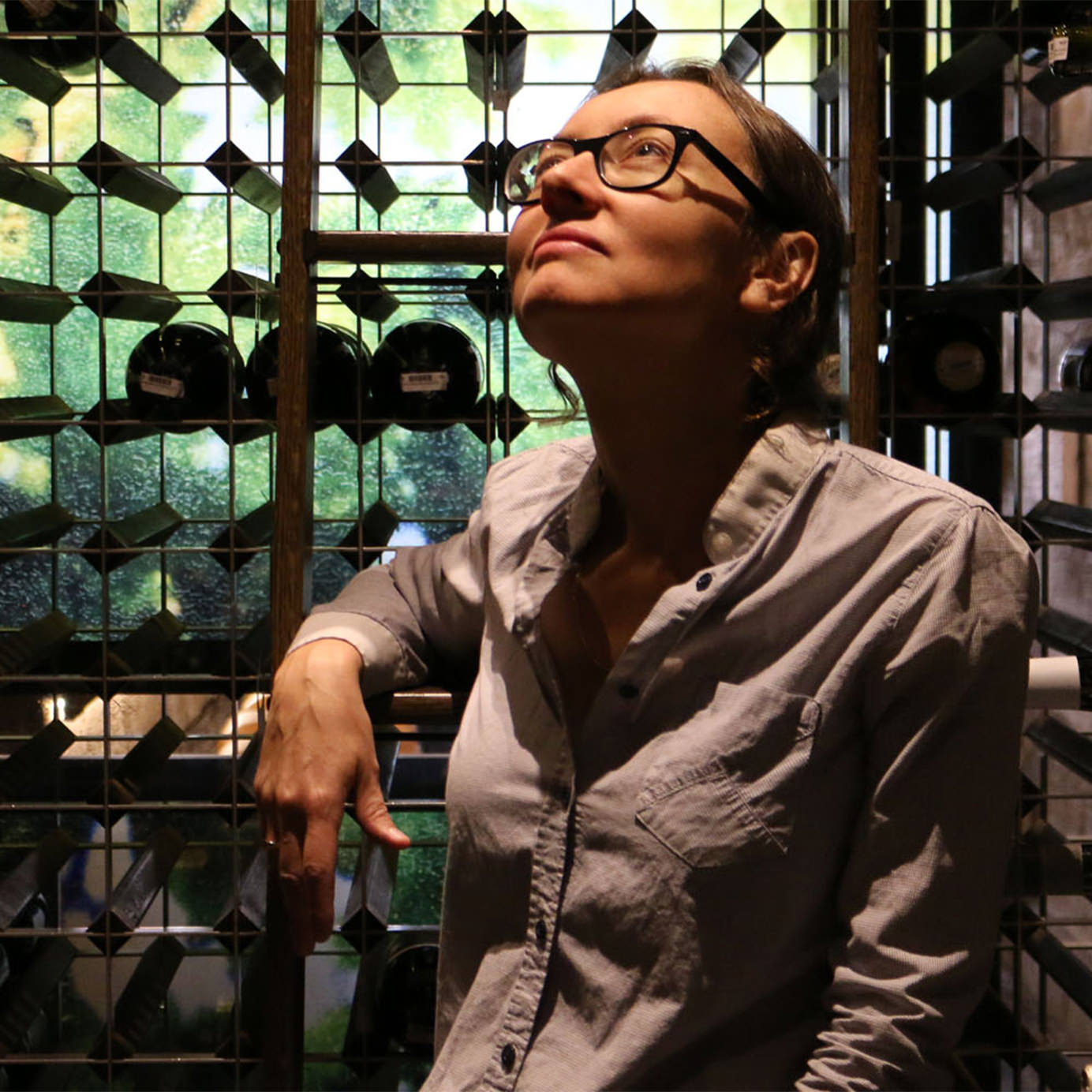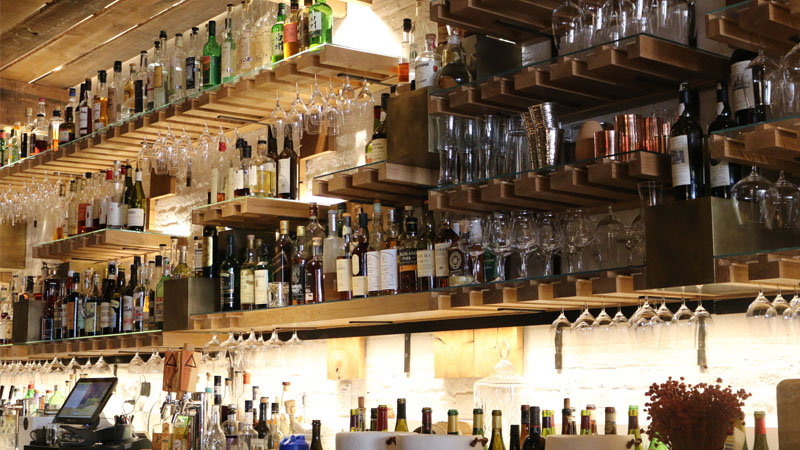On the last day of August, 2017, Master Sommelier Pascaline Lepeltier posted a series of 10 photos on Instagram, featuring some of the world’s finest wine bottles. “8 years building a list,” read each caption, followed by the hashtag #bestwinelistintheworld.
As beverage director of Rouge Tomate Chelsea, Lepeltier had built arguably the world’s best wine list. It had just been named the 2017 Best Long Wine List in the World by World of Fine Wine. The bottles showcased on Lepeltier’s feed were evidence of the program’s prestige, which she had spent eight years building. It was the crowning glory of a restaurant that opened its doors just one year prior.
It was also the last day of Lepeltier’s 10-year career at Rouge Tomate.
Building a List and a Career
Like many modern sommeliers, Lepeltier had a roundabout journey to the world of wine. Born in Anjou, France, in the heart of the Loire Valley, Lepeltier earned degrees in philosophy and hospitality before falling in love with wine, returning to school once again to earn her sommelier certificate. After working for two years as an assistant sommelier at the Michelin-starred L’Auberge Bretonne, Lepeltier landed a position overseeing beverages at the health and sustainability-minded Rouge Tomate, then based in Europe. This was a natural fit for Lepeltier, who had already committed herself to supporting sustainable winemakers. She began traveling between the restaurant in Brussels and the office in Paris weekly in preparation for the opening of the restaurant’s New York location.
The original location of Rouge Tomate in New York opened in 2008 on 60th Street, where Midtown Manhattan meets the Upper East Side. Lepeltier arrived shortly thereafter for a brief, six-month stint to overhaul the beverage program and find someone to run it. This quickly evolved into a five-year wine director position at the restaurant’s original NYC location.
During that time, Lepeltier cleared out the initial wines slated for Rouge Tomate’s program, moving away from commercial wineries and refocusing on those that were organic, biodynamic, and sustainable, particularly from her home region of the Loire Valley. It wasn’t about doing a complete 180, however.
“The question was: who do I want to have from these regions?” Lepeltier says. “Which names should I have and where can I start to push the limit a bit?” Thus, classics like Bordeaux and Napa remained, but with emphasis on producers that shared Lepeltier’s wine philosophies.
Meanwhile, she began to pursue the Court of Master Sommeliers certifications —with exceedingly pragmatic intentions.
“It happened for a very stupid reason … I was thinking that I really wanted to extend my visa, and the lawyers told me that if you are thinking about staying, it’s good to have something recognized in the U.S,” says Lepeltier. Along the way, she obtained an O-1 visa, and received her green card three months prior to the Master Sommelier exam.
Working mostly as a one-woman team, over the next five years Lepeltier transformed New York Rouge Tomate into a world-class wine destination. When the original location closed in 2014 to move downtown, she spent the two-year interim period building an expansive beverage program and a stellar team to support it. As bottles aged in offsite storage, priming for the list, word spread throughout the sommelier community of Lepeltier’s infamous application exam and exacting reputation.
Prestige and an Unexpected Twist
The much-anticipated reopening of Rouge Tomate, now called Rouge Tomate Chelsea, was met with glee by impatient New Yorkers. Lepeltier’s beverage program was the talk of the town. The pre-opening announcement in The New York Times featured the wine program first, with a single-sentence mention of the food. Wine lovers and industry members alike could drink grand cru Burgundy, decades-old Barolo, grower Champagne, oddball Hungarian wine, and more. Most were from organic and biodynamic producers and all were at serious values. Lepeltier continued to expand the program, reaching special heights about 10 months in, when news of the award came from World of Fine Wine.
That was the same day that Rouge Tomate Chelsea owner Emmanuel Verstraeten issued a missive that would cause Lepeltier to leave the company.
“The owner decided to decrease the wine program,” says Lepeltier. “I said, ‘I think it’s time for me to move on’ because I think I did everything I could with that concept.”
Verstraeten was concerned that the Rouge Tomate winning wine awards was not the restaurant he had planned. He originally wanted to create a standard-bearer for health and sustainability in food, not wine. Lepeltier herself stated in a 2015 World of Fine Wine article that, initially, wine was not going to be the center of attention at the restaurant. Verstraeten figured food and wine couldn’t both be the star; so in order to highlight his food philosophy, wine needed to be cut. And so in some ironic fashion, by creating a successful, standard-bearing wine list, Lepeltier also sealed its ultimate fate.
Searching for Sustainability
For those who have come to view Rouge Tomate as synonymous with Pascaline Lepeltier, news of her departure was a shock. How must it feel to spend so many years creating a beverage program, only to have one’s tenure abruptly finished?
“Last year I would have been very upset,” she admits, noting that this year gave her perspective. “I’m a surfer, so you have two choices when you surf. You either go with the wave, or you drown.”
But Lepeltier also admitted that, while unexpected, the change was not entirely unwelcome.
“I’m ready for two things. I’m ready to do something on my own, but I’m also ready to replenish. I’m just dead,” she says. “I gave my last three years to this place. Mentally I was leaving [every night] thinking all the time … You just can’t give anymore.”
The circumstances surrounding Lepeltier’s departure raise a number of pervasive issues within the wine industry. Is it possible to be just a sommelier anymore, or is it necessary to move into a hybrid wine director/manager? Does one need an ownership position to sustain a lifelong career? What constitutes a sustainable career in an industry dominated by irregular, 60-to-70-hour workweeks?
“I’m not sure if you can just be a wine person anymore unless you really, really specialize,” says Lepeltier. “How do you justify a two-times salary for someone building a 150-reference wine list that has a three-times markup?”
Faced with rising labor costs in an industry that has never been particularly lucrative, restaurants need sommeliers who can bridge several positions. While Lepeltier wasn’t technically the general manager of Rouge Tomate Chelsea, she found herself doing much more management and behind-the-scenes labor in the smaller space this past year. The experience, while exhausting, has its benefits.
“You understand the floor, you understand the staff, you are even a better professional by cleaning tables, but do people want to do that?” Lepeltier wonders. It’s a game that young sommeliers are willing to play, working around the clock for the love of the job. But is it sustainable over the course of a career?
“In the past three days I worked 55 hours,” Lepeltier remarks. “I’m 36. I can’t do that. It doesn’t make sense. So how can we make that work without having to switch careers?”
The answer, in Lepeltier’s opinion, lies in restaurant ownership by those who are willing to be thoughtful about changing the industry’s lifestyle requirements. She believes it can be done, referencing the difference between restaurant hours in the U.S. versus those in France, as an example.

The people she believes can make the biggest difference? Women.
“What we are missing is that very few women have the possibility to access ownership or CEO status, where you really get decision power,” Lepeltier argues. “And if it was the case, I think we would have more of an ability to adapt the job to the lifestyle of women, especially after a certain age when families start to happen.”
The truth is, a change in the industry lifestyle is necessary for all. Otherwise, sommeliers of all genders might continue to feel the need to leave the floor at a certain point in their careers. For now, it’s up to the somms themselves to step into ownership and make changes if they want to make their position sustainable in the long run. Will Lepeltier be one of those to return and lead the charge?
“Yes, I will go back on the floor, but the question is how and where, which is why I need to step back and think about that,” she says. “I haven’t done everything I want to yet.”

